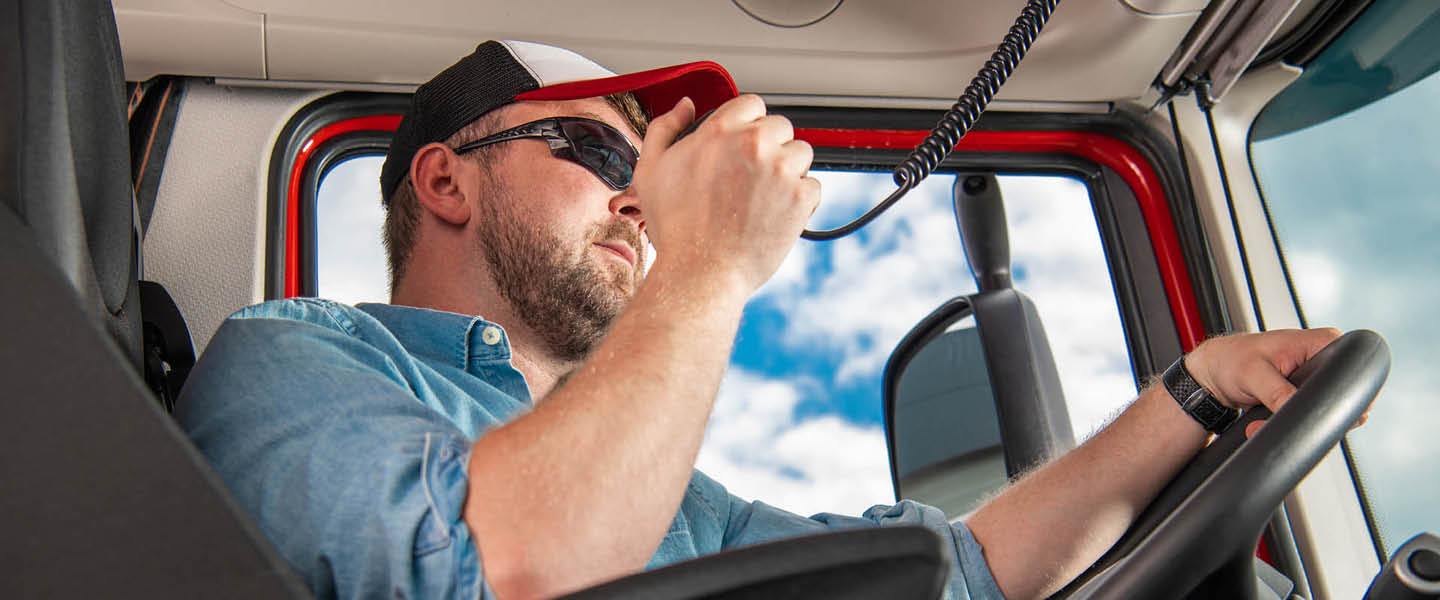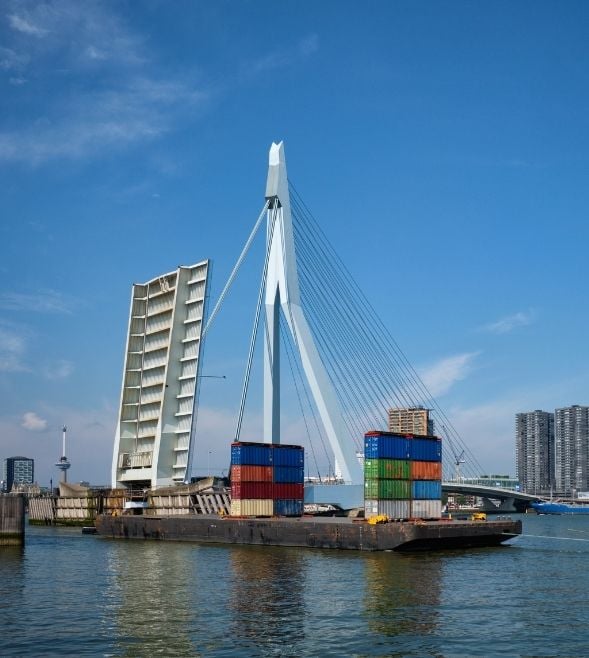-
Financial administration & outsourcing
Entrepreneurs who outsource financial administration reduce the number of administrative tasks and consequently have more time and space to focus on growth.
-
Financial insight
We help you turn financial data into valuable insights that support you in making well-founded decisions. In-depth analyses of your financial situation will help give you a better idea of where you stand and where the opportunities for growth lie, both in the short and long term.
-
Financial compliance
We make sure your company complies with financial legislation and regulations, with correct financial statements, tax reports and other obligations. From our global network, we support you in managing local and international tax risks.
-
Impact House by Grant Thornton
Building sustainability and social impact. That sounds good. But how do you go about it in the complex world of stakeholders, regulations and frameworks and changing demands from clients and society? How do you deal with important issues such as climate change and biodiversity loss?
-
Business risk services
Minimize risk, maximize predictability, and execution Good insights help you look further ahead and adapt faster. Whether you require outsourced or co-procured internal audit services and expertise to address a specific technology, cyber or regulatory challenge, we provide a turnkey and reliable solution.
-
Cyber risk services
What should I be doing first if my data has been kidnapped? Have I taken the right precautions for protecting my data or am I putting too much effort into just one of the risks? And how do I quickly detect intruders on my network? Good questions! We help you to answer these questions.
-
Deal advisory
What will the net proceeds be after the sale? How do I optimise the selling price of my business or the price of one of my business activities?
-
Forensic & integrity services
Do you require a fact finding investigation to help assess irregularities? Is it necessary to ascertain facts for litigation purposes?
-
Valuations
Independent and objective valuations tailored for mergers, acquisitions, and legal matters.
-
Auditing of annual accounts
You are answerable to others, such as shareholders and other stakeholders, with regard to your financial affairs. Financial information must therefore be reliable. What is more, you want to know how far you are progressing towards achieving your goals and what risks may apply.
-
IFRS services
Financial reporting in accordance with IFRS is a complex matter. Nowadays, an increasing number of international companies are becoming aware of the rules. But how do you apply them in practice?
-
ISAE & SOC Reporting
Our ISAE & SOC Reporting services provide independent and objective reports on the design, implementation and operational effectiveness of controls at service organizations.
-
International corporate tax
The Netherlands’ tax regime is highly dynamic. Rules and the administrative courts raise new challenges in fiscal considerations on a nearly daily basis, both nationally and internationally.
-
VAT advice
VAT is an exceptionally thorny issue, especially in major national and international activities. Filing cross-border returns, registering or making payments requires specialised knowledge. It is crucial to keep that knowledge up-to-date in order to respond to the dynamics of national and international legislation and regulation.
-
Customs
Importing/exporting goods to or from the European Union involves navigating complicated customs formalities. Failure to comply with these requirements usually results in delays. In addition, an excessively high rate of taxation or customs valuation for imports can cost you money.
-
Innovation & grants
Anyone who runs their own business sets themselves apart from the rest. Anyone who dares stick their neck out distinguishes themselves even more. That can be rather lucrative.
-
Tax technology
Driven by tax technology, we help you with your (most important) tax risks. Identify and manage your risks and become in control!
-
Transfer pricing
The increased attention for transfer pricing places greater demands on the internal organisation and on reporting.
-
Sustainable tax
In this rapidly changing world, it is increasingly important to consider environmental impact (in accordance with ESG), instead of limiting considerations to financial incentives. Multinational companies should review and potentially reconsider their tax strategy due to the constantly evolving social standards
-
Pillar Two
On 1 January 2024 the European Union will introduce a new tax law named “Pillar Two”. These new regulations will be applicable to groups with a turnover of more than EUR 750 million.
-
Cryptocurrency and digital assets
In the past decade, the utilization of blockchain and its adoption of a distributed ledger have proven their capacity to revolutionize the financial sector, inspiring numerous initiatives from businesses and entrepreneurs.
-
Streamlined Global Compliance
Large corporations with a presence in multiple jurisdictions face a number of compliance challenges. Not least of these are the varied and complex reporting and compliance requirements imposed by different countries. To overcome these challenges, Grant Thornton provides a solution to streamline the global compliance process by centralizing the delivery approach.
-
Private wealth services
Our Private Wealth specialists offer strategic and practical solutions. From tax advice to estate planning and financial scenarios, we make sure you make the right choices today, for tomorrow.
-
Corporate Law
From the general terms and conditions to the legal strategy, these matters need to be watertight. This provides assurance, and therefore peace of mind and room for growth. We will be pro-active and pragmatic in thinking along with you. We always like to look ahead and go the extra mile.
-
Employment Law
What obligations do you have with an employee on sick leave? How do you go about a reorganisation? As an entrepreneur, you want clear answers and practical solutions to your employment law questions. At Grant Thornton, we are there for you with clear advice, from contracts and terms of employment to complex matters such as dismissal or reorganisation.
-
Sustainable legal
At Grant Thornton, we help companies integrate sustainability into their business operations, with sustainable legal at the heart of our approach. We advise on ESG (Environmental, Social, Governance) legislation, and help draft sustainable contracts, implement HR policies, and carry out ESG due diligence in M&A transactions (Mergers and Acquisitions).
-
Pension advisory services
Are you, as business owner or employer, well prepared in terms of pension and other future facilities?
-
Global mobility services
How can you build and evolve a smart global mobility strategy, with policies and processes addressing the complex challenges of managing an international workforce?
-
Maritime sector
How can you continue to be a global leader? The Netherlands depends on innovation. It is our high-quality knowledge which leads the maritime sector to be of world class.

Background
The CJEU has ruled on this topic on several occasions. This shows that the VAT treatment of EU chain transactions is far from being straightforward.
The transactions in question took place before the new rules on chain transactions became into force with the implementation of so-called ‘quick fixes’ introduced by EU Directive 2018/1910. However, principles what the CJEU has introduced in its decision, are also applicable under the current EU VAT rules.
Facts
B (established and VAT registered in the Netherlands and also registered for VAT in Poland) acted as an intermediary in a chain of transactions. B purchased the goods from BOP (established in Poland) and shipped them directly from Poland to its final customers located in other Member States (MSs). B communicated to BOP its Polish VAT number and BOP treated those supplies as domestic supplies in Poland subject to VAT at 23%. B treated the supplies it made to its clients as intra-Community supplies and therefore exempt. B’s customers reported the VAT applicable on the intra-Community acquisitions in the MSs of destination of the goods.
The Polish tax authorities found three years later that transport should have been attributed to the first sale in the chain transaction. Consequently, the first sale instead of the second sale was re-classified to be an intra-Community supply. However, the tax authorities took the position that that the supply could not be exempted and BOP was obliged to charge 23% VAT on the re-classified intra-Community supply because B had communicated the Polish VAT number to BOP. Consequently, B had to pay Polish VAT at 23% invoiced to it by BOP. Moreover, B’s right to deduct the corresponding input VAT was refused by the tax authorities. This meant that 23% VAT charged on the sale was not deductible.
Moreover, since B communicated its Polish VAT number to BOP, Polish VAT was also payable on a so-called ‘number acquisition’. The number acquisition takes place under the rules of Article 41 of the VAT Directive (VD) which provides that if the buyer in an intra-community transaction communicates to the seller a VAT number of another Member State (MS) than the MS of arrival of the goods, then the VAT becomes payable in the MS where this VAT number is issued, unless the EU triangulation applies or if the buyer can prove that the acquisition VAT was paid in the MS of the arrival of goods.
The Polish VAT that became payable on the number acquisition was not deductible because the Polish tax authorities argued that the acquisition VAT was not paid on this supply in the MS of destination. This resulted in B being charged 46% Polish VAT in total.
B argued that the VAT was incorrectly applied on the number acquisition because the domestic VAT number of the MS of departure of goods was used when acquiring the goods. In addition, it argued that the supplies had been taxed in the MS where the transport ended (by final customers) and therefore the VAT on the number acquisition in Poland was applied incorrectly.
Non-deductible VAT due on an intra-Community supply
In its decision, the CJEU indirectly confirmed that the non-deductible VAT becomes due if a supplier does not meet the conditions for an exemption in the case of a (re-classified) intra-Community supply. For example, the CJEU mentions in para. 49 of the decision that “despite the reclassification by the tax authority of the first supply of the chain of successive transactions at issue as an intra-Community transaction, the vendor, namely BOP, remains required to invoice VAT at the normal rate whereas the purchaser, namely B., cannot deduct input VAT.”
A number acquisition even if the VAT number of MS of departure is used
The CJEU states that the applicability of Article 41 of the VD (a so-called ‘number acquisition’) is not precluded because B made the acquisition with the VAT number of the MS of departure of the goods. Consequently, the VAT could apply on a number acquisition even where a domestic VAT number is provided.
The facts of the present case do not reflect a typical scenario that one would have in mind when discussing number acquisition stipulated in Article 41 of the VD, because this scenario involves two MSs but a typical scenario would involve three MSs. However, the number acquisition is still applicable.
A number acquisition even if the final customer accounts for VAT
According to the CJEU, the fact that B’s customers had accounted for acquisition VAT cannot be relied upon by B to correct the applicability of the ‘number acquisition’. The CJEU stated that B’s customers paid VAT on the second supply in the chain not on the first supply. In order to make a correction, the VAT should be applied in the MS of destination by the same person who made the number acquisition. Consequently, the fact that B's customers applied VAT on the purchases of goods which were erroneously classified as intra-Community acquisitions in the MSs of arrival of the goods has no influence of the applicability of VAT on the number acquisition and on the possible correction of it under Article 41 of the VD.
Double taxation is not allowed
The CJEU decided that the number acquisition, however, is not applicable if a re-classified intra-Community supply is not subject to exemption. The CJEU stated that the provisions on the number acquisition (Article 41 of the VD) should ensure that intra-Community supplies are subject to VAT once, and only once. If the tax authorities had denied to exempt BOP’s intra-Community supply, then there was no risk of non-taxation. Consequently, it would infringe the principles of proportionality and fiscal neutrality if B also should pay VAT on the number acquisition.
Conclusions and practical implications
The CJEU provides important guidance how the VAT on chain transactions applies. Although the VAT rules on the chain transactions have changed in the meantime, those principles remain relevant for the practice.
The non-deductible domestic VAT on an intra-Community supply could become due if conditions of the exemptions are not met, e.g. if a VAT number of a MS other than that of the MS of departure is not provided.
The VAT on a number acquisition could become applicable even if the goods are acquired under the VAT number of the departure. If the chain transactions are wrongly classified, the number acquisition cannot be corrected if the final customer applies VAT on the acquisition that actually should have been a domestic purchase in the MS of arrival had the VAT rules been applied correctly.
However, on the positive side, if the tax authorities find that the transport has been allocated to a wrong supply and consequently re-classify a domestic sale as an intra-Community supply which however cannot be exempted and is subject to non-deductible VAT, then this transaction cannot be subject to the double taxation (i.e. the non-deductible VAT on the number acquisition is not applicable in such case).
The businesses should ensure that they treat the intra-EU (chain) transactions correctly in order to avoid paying high amounts of non-deductible VAT when the VAT should actually not been charged at all or should have been fully deductible if the VAT rules had been applied correctly and the transport had been allocated to a right supply.
For more detailed information about the matters discussed above, please contact us.




